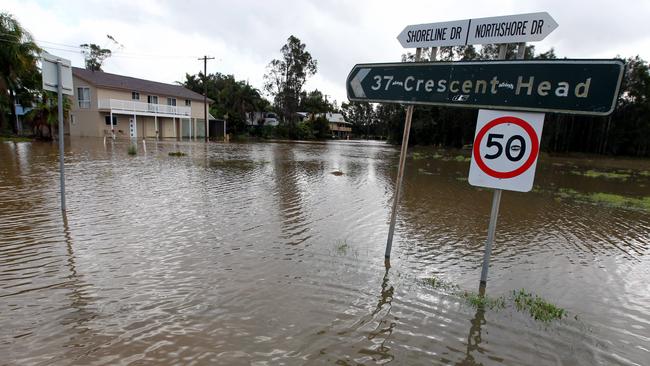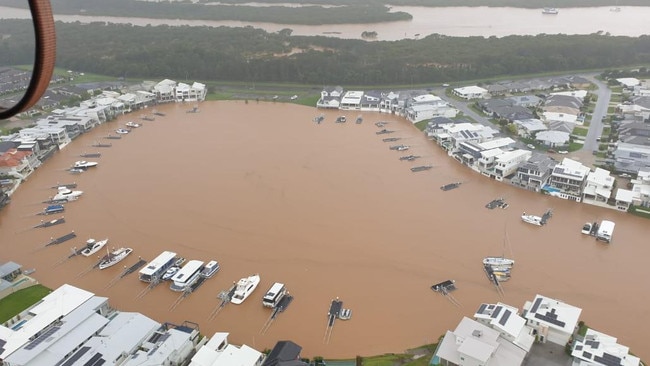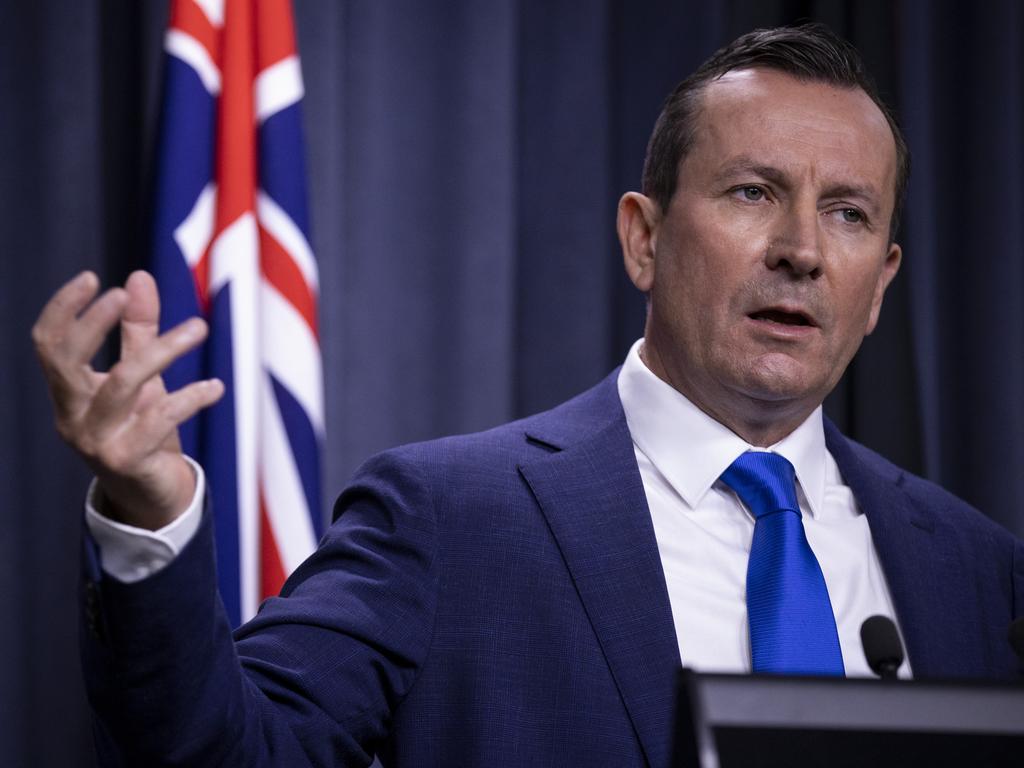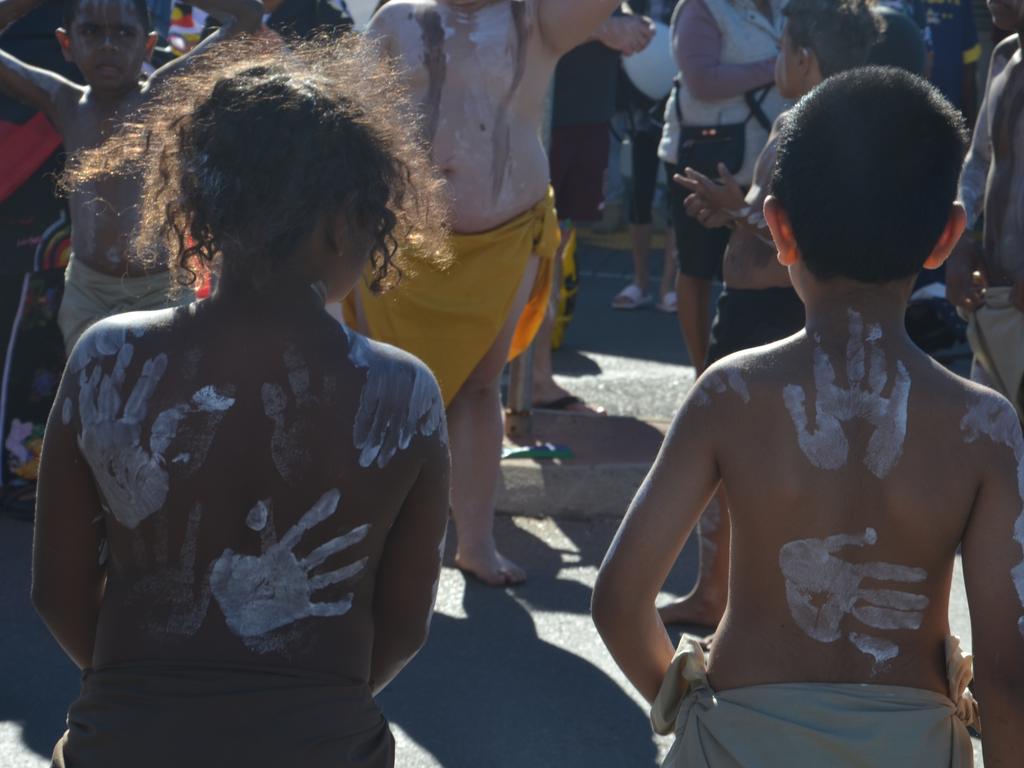
The flooding that swept through NSW last week, from the Clarence River in the north to the Shoalhaven River south of Sydney, gave readers and viewers a break from the “Twitterisation” of journalism.
Many reporters have competed for months to reveal ever more grotesque allegations of sexual impropriety in Parliament House. It reached the ridiculous last Monday, when sordid revelations of gay masturbation photos in a female minister’s empty office were used to amp up claims of misogyny.
In the real world, tens of thousand of Australians not obsessed with politics were forced to evacuate their flooded homes. Real Australian heroes risked their lives night and day to save other Australians, their animals and their property.
Yet the initial media response last Friday and Saturday week to floods on the Mid North Coast of NSW showed just how strapped for resources the modern media is. Trying to follow the flooding in the regional centres of Kempsey, Port Macquarie and Taree was difficult on 24-hour news television. Most large newspaper websites tried to keep readers up to date and this paper enjoyed strong traffic for its live blog on the floods. But it was clear many organisations just did not have enough reporters or photographers on the ground.
Partly that’s because it was the weekend. But it’s also because so many reporters and photographers have left the business, as advertising that used to support journalism left traditional media for Facebook and Google.
The easiest place to find up-to-date coverage and pictures was on the Twitter accounts of the Port Macquarie News and the Manning River Times in Taree.
Port Macquarie News, formerly one of Fairfax’s regionals now in the hands of Antony Catalano’s Australian Community Newspapers, delivered in-depth coverage online all week. Its print edition last Friday devoted its first 12 news pages to the flood.
Manning River Times was unable to produce a print product on Wednesday because of the natural disaster but did produce a full digital replica edition with a strong 12-page coverage of the flood.

Footage of an old farmhouse washed into the Manning, west of Taree, and floating down the river dominated Saturday night’s news and later the young soon-to-be-married couple who owned the house provided heartbreaking copy, both on the Taree paper’s website and later for the Sunday metro newspapers.
Once the big Sydney newspapers would have been all over this story by Friday with teams of reporters, colour writers and photographers, rapid updates online and pages of coverage in their print editions. The first Sydney-based paper to hit the story hard was The Sunday Telegraph, edited by Mick Carroll. It devoted a front page splash and four inside news pages to what was the best NSW story since the previous summer’s bushfires, which started in the same region.
The previous day’s Saturday papers did not do so well, even though the Mid North Coast had already been inundated by Friday as pictures on the Port Macquarie News website showed. On the Saturday, his paper ran a page five lead story, accompanied by a Nathan Edwards photo of a flooded Macksville, north of Kempsey. It reported several towns in the area had more than 200mm of rain on Friday, while other areas recorded more than 300mm.
The main Sydney papers, The Sydney Morning Herald and The Daily Telegraph, would once have been all over this for their big Saturday editions. The Tele ran a single full page piece on page nine with another Nathan Edwards photo of a rescue at Telegraph Point, across the Hastings from Port Macquarie, and smaller photos from Port, Macksville, Wollongong and Sydney.
The Saturday SMH relegated the flood to a picture story across pages 16 and 17, but it was not the lead on either page. Its story was 15 paragraphs and focused on Sydney and Port Macquarie. It did not cover the flood situation in other centres but did report rainfall totals in many areas.
By Monday the flooding had inundated much of western Sydney. The newspapers and TV stations cranked up their coverage and the ABC boosted staff, including sending breakfast co-host Lisa Millar from Melbourne to Port Macquarie. The commercial stations blanketed Sydney’s west as the Hawkesbury and Nepean rivers burst their banks and the city’s main dam, Warragamba, began spilling over its wall.
Sure enough, the weather story delivered audiences on free-to-air television. Seven took the honours Monday night with 1.08 million nationally, slightly ahead of Nine on 1.05m. Seven led again on Tuesday with 1.09 million, ahead of Nine on 1.07 million. ABC news was also up, with 728,000 viewers. All morning television programs enjoyed substantial audience rises.
Daily Telegraph editor Ben English took the newspaper honours for the week with a compelling coverage on Monday morning. The full front page was a picture from western Sydney, the paper’s heartland. The first six news pages were devoted to the story. The Tele used dozens of photos and personalised its coverage with interviews of flood victims in Sydney and on the Mid North Coast.
The SMH and The Australian both splashed on the flooding that morning with front page photos. Both devoted pages four and five to the story with multiple pictures from Sydney and the Mid North Coast. The Australian gave the story the same treatment on Tuesday without the page one photo while the SMH upped its coverage to a splash and three inside news pages. It was a big news week. Peter van Onselen’s Monday night revelations in this newspaper and on Ten news about gay sex videos in Parliament House, the Four Corners program on the alleged rape in Parliament House of Liberal staffer Brittany Higgins (which, in my view, did not help Ms Higgins’s case) and a guilty verdict in the rape trial of former rugby league star Jarryd Hayne were compelling stories. They all got plenty of play on social media, which drives so much news judgment today — wrongly, in my view.
Editors may have analytical software tools to measure audience engagement. But other considerations also need to drive coverage. Mainstream media needs to be the glue that binds communities in times of trouble. If readers and viewers cannot be certain of blanket coverage of big stories like fires, floods and pandemics, then mainstream media is doomed.






Big weather events sell newspapers and drive television audiences.